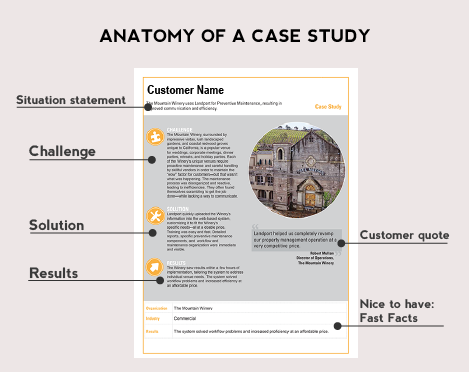What makes a good case study? I’m often asked to put together a case study with starting information that varies. I might have a solution that was provided by a company, but not the starting question. I might have a good opening statement, but not a result.
As I say often, every document depends on the audience and should conform accordingly. But here’s a great formula for a case study:
Situation statement. This is a short (can be as short as 2 sentences) statement that lays out who the customer is—even if they can’t be named, like “A Tier 1 mobile operator in North America”—and what kind of industry they’re in. State the result the product or service had. This is a good place to put a big number, like “Our product saved the customer 80% in energy costs.”
Challenge. This lays out in more detail the problem the customer was experiencing. The pain points and the moment of impetus to change.
Solution. This discusses not only the unique solution provided by the product or service, but also why the company was the best choice to deliver the solution. This area can go into detail about the initial outlay of the offering.
Result. This is the best part—the good news! Here, the gains made implementing the product or service are discussed, plus how well the product or service worked with the customer. A quote from a happy customer is the gold standard here, so always try to get one.
Nice to haves: A customer quote always makes case studies better. Also try to include fast facts, where the case study is summed up in a chart. An engaging photo of the product or service or customer is also nice.
Put all of this together in an engaging layout that reads like a dossier—it should be 2 pages max, but ideally one.
